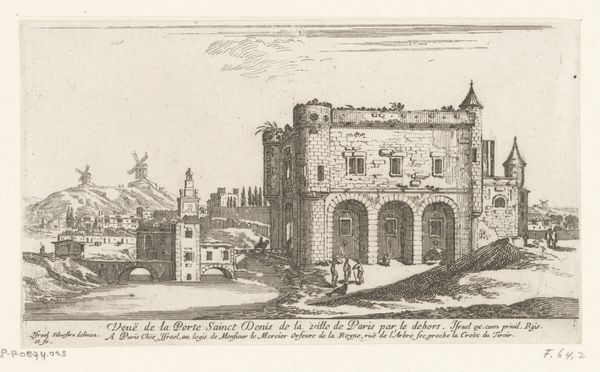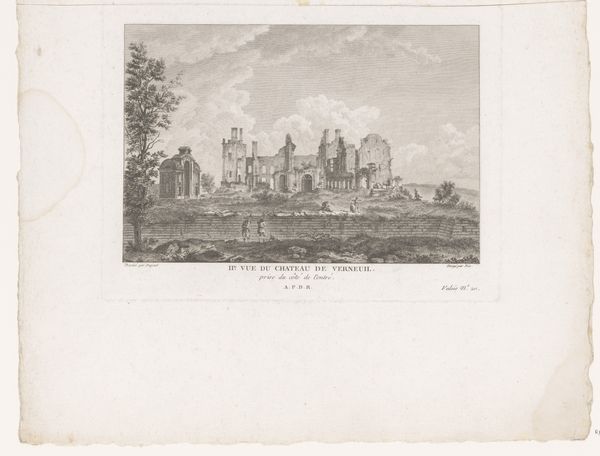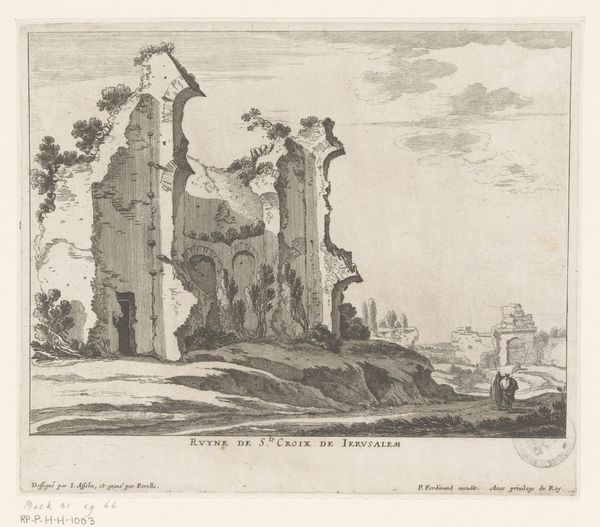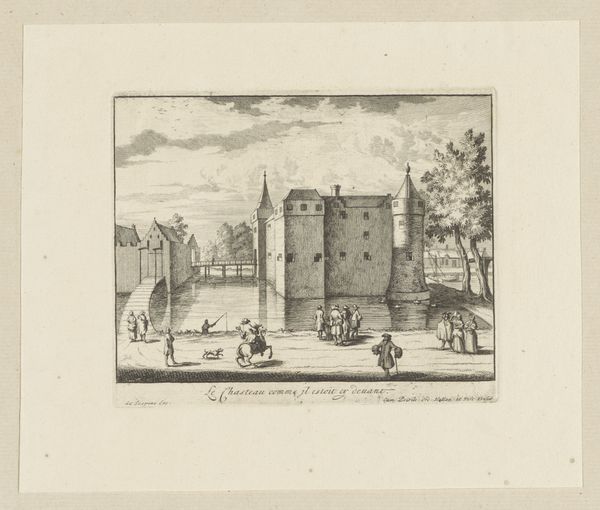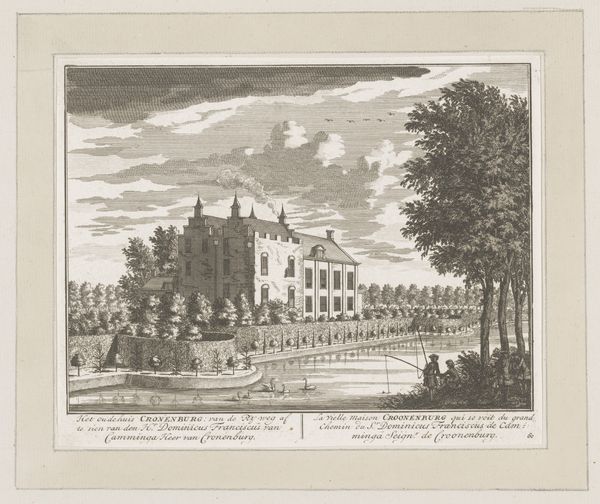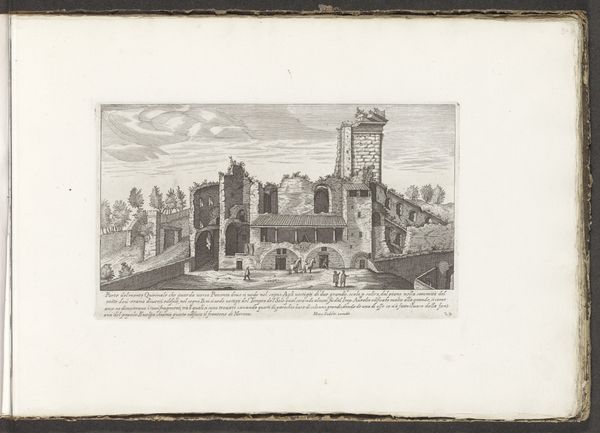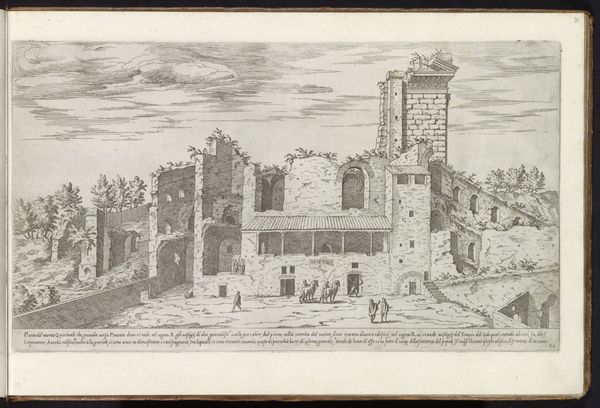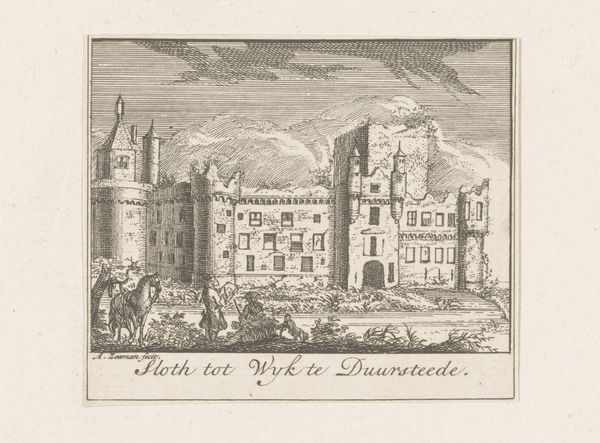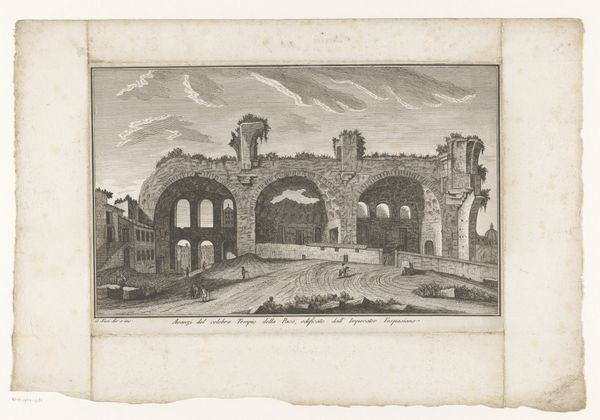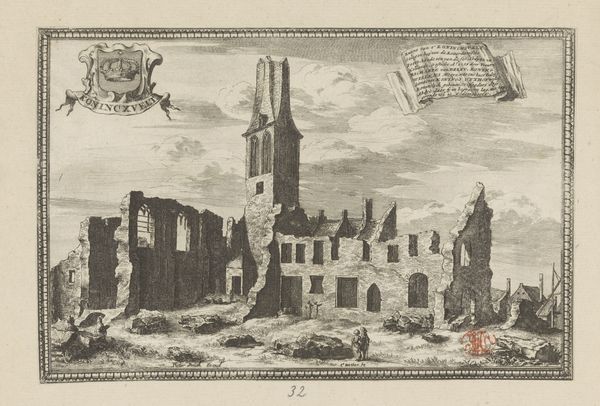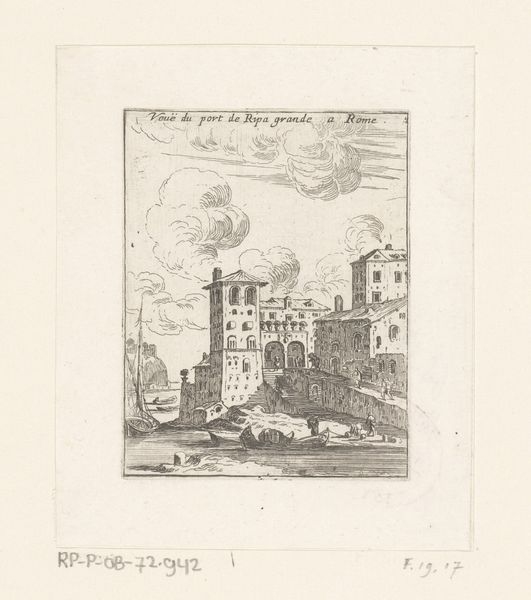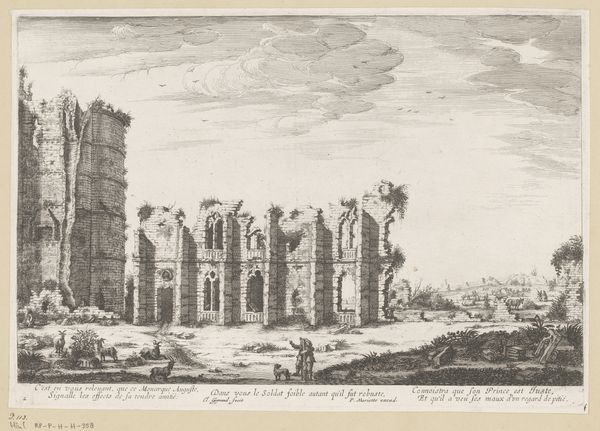
print, etching
#
baroque
#
dutch-golden-age
# print
#
etching
#
landscape
#
cityscape
Dimensions: height 136 mm, width 181 mm
Copyright: Rijks Museum: Open Domain
Editor: Here we have Jacobus Schijnvoet's "Gezicht op kasteel Ter Aa bij Breukelen," an etching from 1711 currently housed in the Rijksmuseum. It has such a melancholic atmosphere, and the delicate lines somehow make the crumbling castle even more poignant. How do you interpret the significance of ruins depicted like this in Dutch Golden Age art? Curator: That melancholy is key. Think about what these images of crumbling castles meant in the context of the Dutch Republic's rise. Here's a rising mercantile power deliberately looking back at what exactly? A feudal past, one replaced by burghers and trade. These prints weren’t just landscapes, they were about shifting power dynamics. They offered a narrative where the new republic, the *now*, has superseded the old aristocratic order. What do you think, looking at the figures in the foreground, seemingly admiring the ruin? Editor: I see them almost as tourists, witnessing history and this societal change that you pointed out. But wouldn't some viewers still hold some kind of respect for this "crumbling aristocracy"? Curator: Precisely. That tension is essential. Prints like this walked a tightrope, acknowledging the past, even romanticizing it, while simultaneously legitimizing the present. This view becomes palatable, easily consumed, devoid of direct political comment, yet inherently *political* by its careful selection and presentation of a specific history. See how it’s subtly framed and titled? It mediates between respect for a picturesque ruin and an assertion of a new order. Editor: So it is as if by viewing the past as a picturesque relic it’s somehow made safer, less threatening to the rising social structure of the time? I hadn’t thought about it that way. Curator: Exactly! And mass-produced prints like these played a vital role in shaping a collective understanding, and perhaps a carefully cultivated collective *memory*. Editor: That’s really fascinating. Thanks, that definitely gives me a lot to consider.
Comments
No comments
Be the first to comment and join the conversation on the ultimate creative platform.
